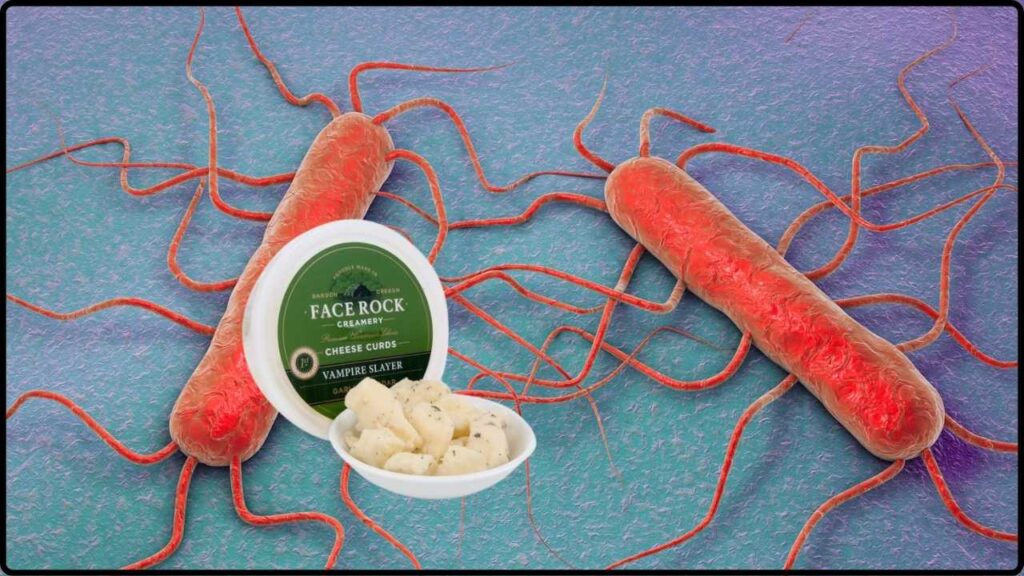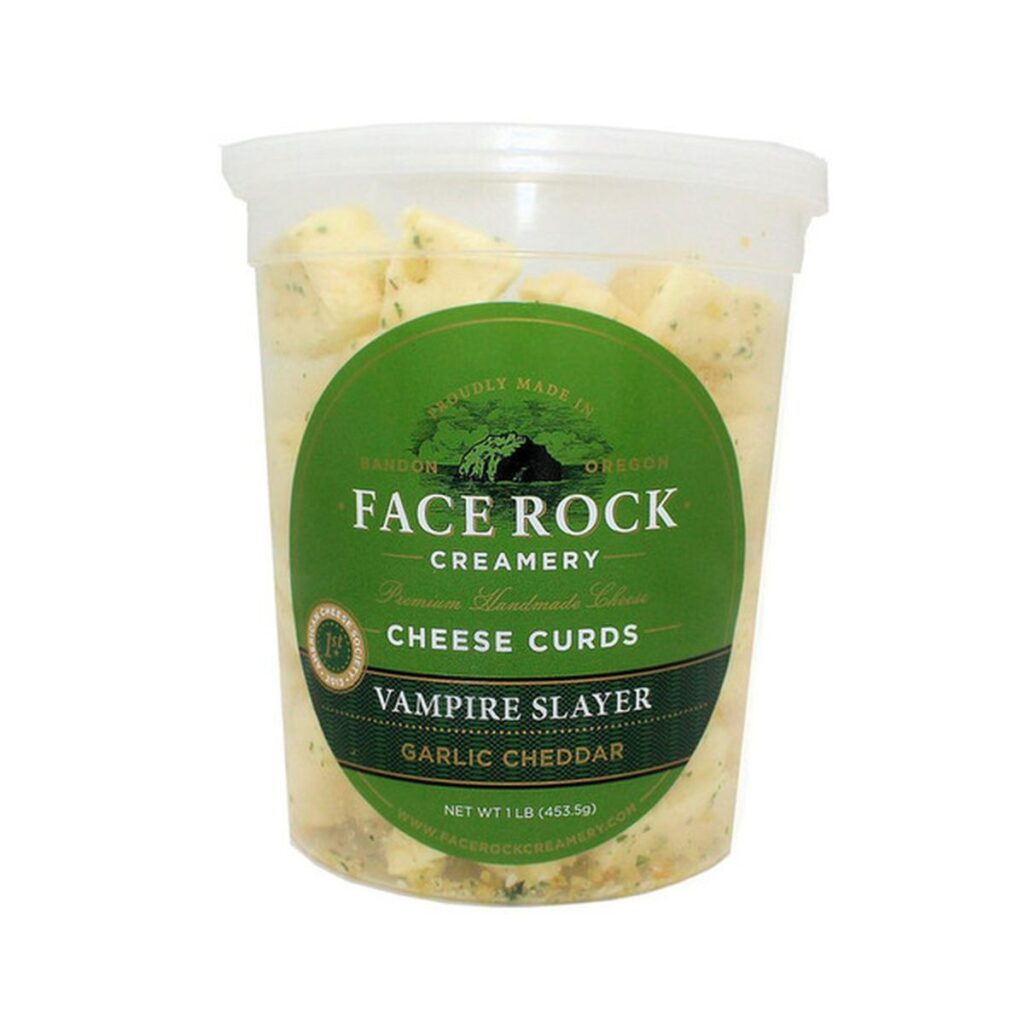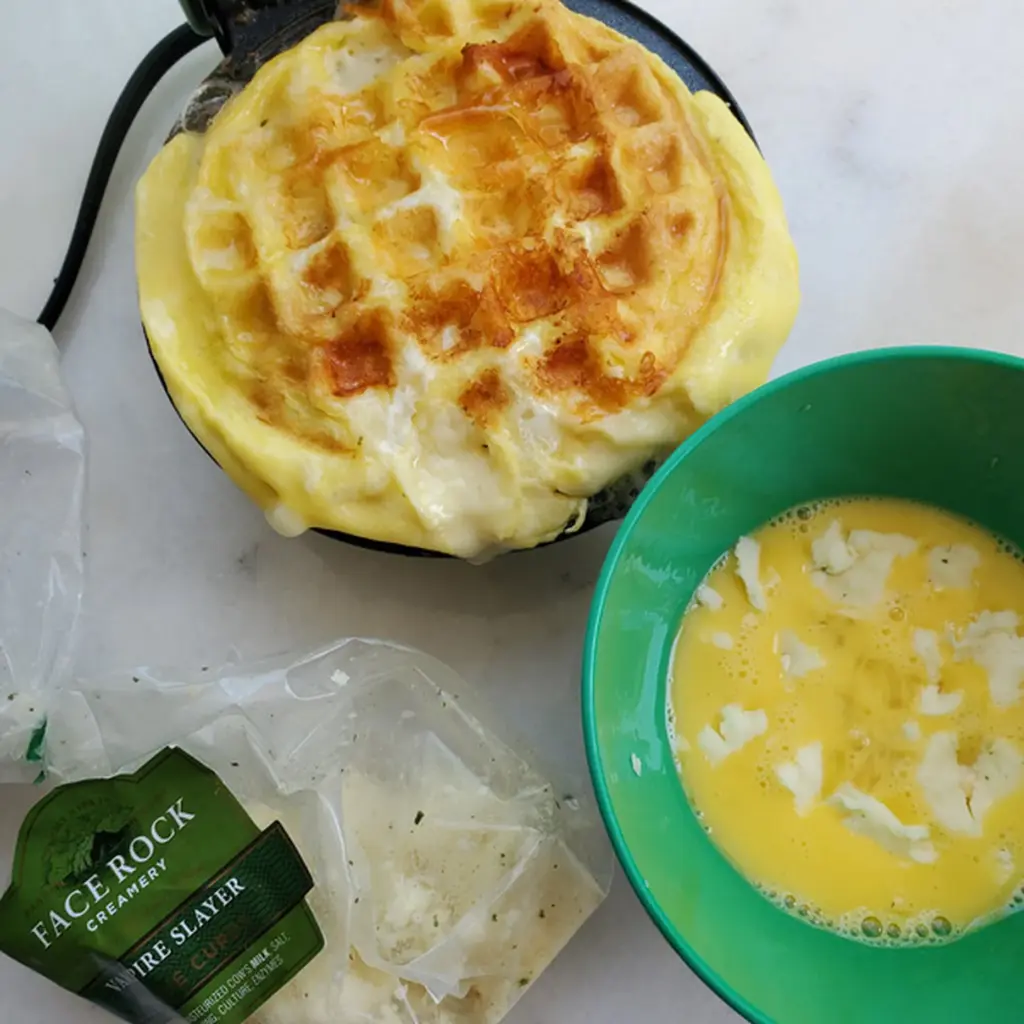
Popular Vampire Slayer Cheese Curds Recalled for Listeria Risk: In a world where food safety is a top priority, a recent recall has raised concern among cheese lovers, especially those who adore the famous Vampire Slayer Cheese Curds from Face Rock Creamery. This beloved Oregon-based creamery has voluntarily recalled two specific batches of its Garlic Cheddar Curds due to the potential risk of Listeria monocytogenes, a harmful bacterium. The recall affects several states, including California and Nevada, specifically the Trader Joe’s locations in Northern California and Northern Nevada. While no illnesses have been reported as of now, it’s a reminder to stay vigilant about food safety. For cheese lovers, especially those who have already picked up these curds, the message is clear: better safe than sorry. In this article, we’ll break down everything you need to know about the Vampire Slayer Cheese Curds recall, why Listeria is such a big deal, how to stay safe, and what you can do if you’ve already purchased a recalled product.
Popular Vampire Slayer Cheese Curds Recalled for Listeria Risk
The recall of Vampire Slayer Garlic Cheddar Curds serves as a crucial reminder of the importance of food safety and the role that proper food handling plays in protecting public health. While no illnesses have been reported yet, it’s essential for consumers in the affected areas to check their products and return them for a refund. If you’ve purchased any of the recalled curds, please take action to avoid any potential health risks. And remember, food safety is always a team effort—whether you’re a home cook, a parent, or a store manager.
| Topic | Details |
|---|---|
| Product Recalled | Vampire Slayer Garlic Cheddar Curds |
| Company | Face Rock Creamery |
| Contamination Risk | Listeria monocytogenes |
| Affected Areas | Northern California (Monterey, Fresno, and locations north) and Northern Nevada (Carson City, Reno) |
| Product Info | 6 oz cups with Use By date: August 29, 2025; Lot numbers: 20250519VS01, 20250519VS02 |
| Return Process | Return to place of purchase for a full refund |
| More Information | Contact Face Rock Creamery at [email protected] |
| FDA Notification | Yes, FDA and Oregon Department of Agriculture notified |
| Health Risks | Listeria can cause serious infections, particularly in vulnerable groups (elderly, pregnant women) |
The Heart of the Issue: What is Listeria?
You may have heard of Listeria before, but let’s take a moment to really understand why it’s so concerning, especially when it comes to food. Listeria monocytogenes is a bacterium that can cause Listeriosis, a serious infection. This illness is often associated with foods that are improperly handled, undercooked, or stored at incorrect temperatures. What makes Listeria particularly dangerous is that it thrives in cold environments, like the fridge, and can grow even at temperatures below freezing.
For most healthy people, Listeria might only cause mild symptoms like nausea, stomach cramps, and diarrhea. However, for vulnerable groups such as the elderly, pregnant women, and those with weakened immune systems, Listeria can lead to severe health complications, including miscarriages, stillbirths, and meningitis.
It’s important to note that Listeriosis can take a few days to show up, so don’t be alarmed if symptoms don’t appear right away. But if you do experience signs of Listeriosis, especially if you’re in a higher-risk group, it’s best to seek medical attention as soon as possible.
Listeria is one of the most persistent foodborne pathogens because it can grow at refrigeration temperatures, unlike many other harmful bacteria. This makes it harder to spot and requires extra precautions, such as proper food storage and hygiene practices, to ensure that it doesn’t spread in your kitchen.

Why Popular Vampire Slayer Cheese Curds Recalled for Listeria Risk?
Face Rock Creamery initiated the recall after routine testing revealed the potential presence of Listeria monocytogenes in two lots of its Vampire Slayer Garlic Cheddar Curds. These particular batches were distributed exclusively at Trader Joe’s locations in Northern California and Northern Nevada.
While no illnesses have been reported to date, the company and regulatory agencies such as the U.S. FDA and the Oregon Department of Agriculture have acted quickly to minimize any risk to the public. The 6 oz cups of Vampire Slayer Cheese Curds in question have a Use By date of August 29, 2025, and the lot numbers affected are 20250519VS01 and 20250519VS02.
If you have purchased these cheese curds, it’s essential to check the lot numbers and the Use By date. If you have any of the affected products in your fridge, it’s crucial to return them to the store for a full refund.
Although no illnesses have been reported, the decision to recall was made as a precautionary measure. Routine quality control procedures, like microbiological testing, are critical for identifying potential contamination before products reach the public. In this case, Face Rock Creamery took swift action to notify the FDA and the public to prevent any potential health risks from escalating.

What to Do if You’ve Purchased the Recalled Curds?
If you’ve recently purchased the recalled Vampire Slayer Cheese Curds, don’t panic. The first thing you need to do is stop eating them. The next step is to return the product to the Trader Joe’s store where you bought it, where you’ll receive a full refund.
For anyone who is unsure whether they have the affected product, Face Rock Creamery has urged customers to carefully check the Use By date and Lot numbers.
How to Identify the Affected Cheese Curds:
- Look at the packaging: The affected product comes in 6 oz cups.
- Check the Use By date: August 29, 2025.
- Verify the Lot Numbers: 20250519VS01 and 20250519VS02.
- Check the Location: Only available in certain Trader Joe’s stores in Northern California and Northern Nevada.
If you’ve already consumed the curds and are worried about potential symptoms, keep an eye out for the signs of Listeriosis. But don’t worry – most people with healthy immune systems won’t be seriously affected. Still, it’s always best to check with your doctor if you have any concerns.
How Listeria Gets into Food: A Quick Guide
It’s good to understand how Listeria can find its way into food, so you can take steps to protect yourself and your family. Here’s how it typically happens:
- Cross-Contamination: Listeria can spread from contaminated surfaces (like cutting boards or knives) to food if proper cleaning practices aren’t followed.
- Improper Storage: Listeria thrives in cold temperatures, which means food stored in the fridge or even the freezer can be at risk if the temperature isn’t low enough.
- Contaminated Raw Materials: Listeria can be present in milk or meat products before they even reach the kitchen. This is why pasteurization and proper cooking are so crucial.
To reduce your risk of exposure to Listeria, always practice good food safety by:
- Keeping raw meat separate from ready-to-eat foods.
- Washing your hands before handling food.
- Storing foods at the correct temperature (especially perishable foods like cheese).
- Following expiration dates and looking for recall notices like this one.
Listeria monocytogenes is unique because of its ability to grow in refrigerated environments, unlike most pathogens that can’t survive in the cold. It’s not something most people think about when they’re buying cheese, but it’s something that can seriously affect your health if not taken seriously.
Listeria and Cheese: Why It’s a Bigger Deal Than You Think

Cheese is often one of those foods that we just love to indulge in. But when it comes to soft cheeses and even fresh curds, Listeria can be a real risk. Many soft cheeses, like brie, camembert, and ricotta, are more likely to be contaminated because they aren’t heated to high temperatures during production. This makes it essential for consumers to be cautious about the source of the cheese and how it’s stored.
For cheese producers, maintaining a sterile environment and following all safety protocols is crucial in preventing contamination. For consumers, ensuring that cheese products are stored properly in the fridge and consumed by the recommended Use By date can help lower the risk.
Are All Cheese Products at Risk?
Not all cheese products are created equal when it comes to food safety. Hard cheeses like cheddar and parmesan are generally safer because their lower moisture content and longer aging process make them less susceptible to contamination. However, fresh cheeses and those that haven’t been pasteurized are more likely to harbor harmful bacteria.
Best Practices for Handling Cheese
Here’s what you can do to reduce your risk of Listeria or other foodborne illnesses when handling cheese:
- Store cheese in the fridge at a consistent temperature of 40°F (4°C) or lower.
- Wash your hands before and after handling cheese, especially if it’s being prepared for children, pregnant women, or the elderly.
- Separate raw meats and cheeses to avoid cross-contamination.
- Eat fresh cheeses within the recommended time frame and check for signs of spoilage like mold growth or an off-smell.
How Food Recalls Work: Understanding the Process?
When a company like Face Rock Creamery discovers that a product may pose a risk to public health, they follow a detailed process to issue a recall. The FDA and other regulatory agencies help facilitate the recall to ensure that affected products are removed from store shelves and that consumers are notified.
Here’s a general look at how food recalls work:
- Detection: A potential issue is identified either through routine testing, customer complaints, or regulatory inspections.
- Investigation: The company, with guidance from health authorities, investigates the issue to determine whether the product poses a risk.
- Recall: If the product is confirmed to be at risk, the company issues a recall and works with stores to remove the product from shelves.
- Consumer Notification: Consumers who purchased the affected product are informed via official channels, such as press releases, store notices, and online announcements.
- Refunds and Replacements: Affected consumers are typically offered a refund or replacement for the recalled product.
Recalls like this one are vital for maintaining consumer safety and confidence in food products. Food companies and regulatory bodies collaborate to ensure that affected products are quickly and efficiently removed from the market.
The Truth About Vegetable Milk—Why Scientists Say It’s Not as Healthy as You’ve Been Told
New COVID Variant ‘Nimbus’ Spreads Fast Across U.S.—Could a Summer Surge Be Next?
Say Goodbye to Botox and Brain Fog—This Simple Daily Habit Could Change Everything











